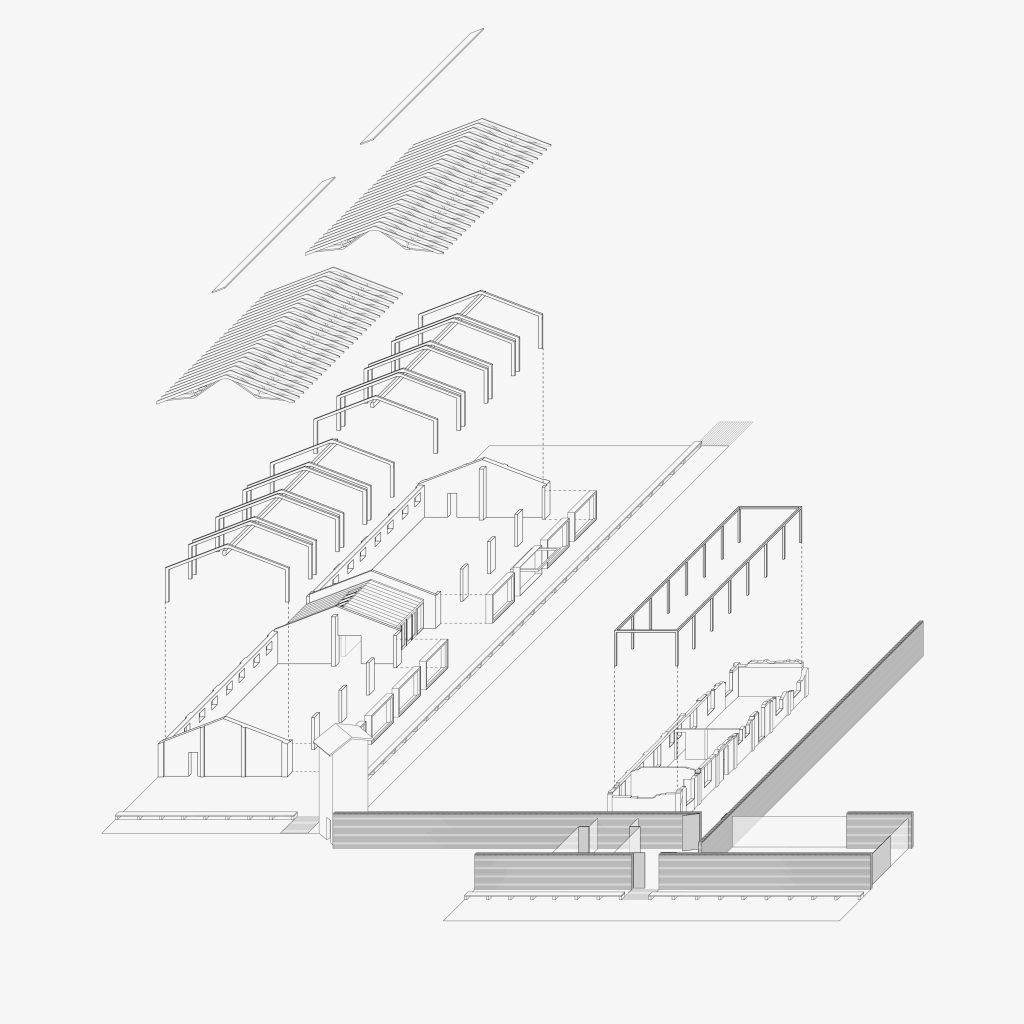NEW CAMPO DI FOSSOLI VISITOR CENTER

LOCATION Carpi, Modena, Italy
YEAR 2021
THEME Architecture, Cultural spaces, Visitor center
STATUS Competition
DESIGNERS Andrew Berman, Tomaso Monestiroli, Luca Cardani, Federico Bucci, Christian Campanella
The historical significance of the Fossoli Camp is written not only by the physical traces that have come down to the present day, but also by the names and numbers that tell of the lives lived here.
There were more than five thousand women and men who during the last years of World War II lost their freedom here for political or racial reasons.
The memory of the Fossoli Camp is linked to the great tragedy in European history of the Holocaust: a place of transit for imprisoned individuals, outcasts, refugees, taken out of the flow of daily life and dramatically waiting to know their fate.
The construction of a space that remembers on the temporal dimension of the passage from freedom to detention is thus the founding theme of a project that measures itself against the memory of the Fossoli Camp.
In pursuing this goal, we have found inspiration in a passage from the Summa de exemplis ac similitudinibus rerum written by John of San Gimignano in the early 14th century, quoted in Frances A. Yates’ masterful study devoted to the Art of Memory (1966):
“There are four things,” says Friar John, “which help man to remember well. The first is that he arrange the things he wishes to remember in a certain order. The second is that he adheres to them with passion. The third is that he brings them back to unusual similitudes. The fourth is that he recalls them with frequent meditation.”
In these terms, the project interprets the theme of the new entrance to the Camp as the construction of an access route, a sequence of places that lead progressively into the camp, evoking the theme of “passage.”
Three simple brick walls, orthogonal to each other, mark the location of earlier moats and fences. Passing through and along these walls allows the visitor to draw boundaries, from the outside world to the camp’s interior space. The visitor crosses subtle thresholds to enter, slowed by architecture intent on creating a silence that allows the visitor to hear and feel the site itself.
These passages correspond to a sequence of places that the project intends to recast in their meaning rather than in their original conformation, starting from the reading of historical stratifications, which provide the framework within which some new signs and elements recompose a sequence of spatial meanings related to the path.








